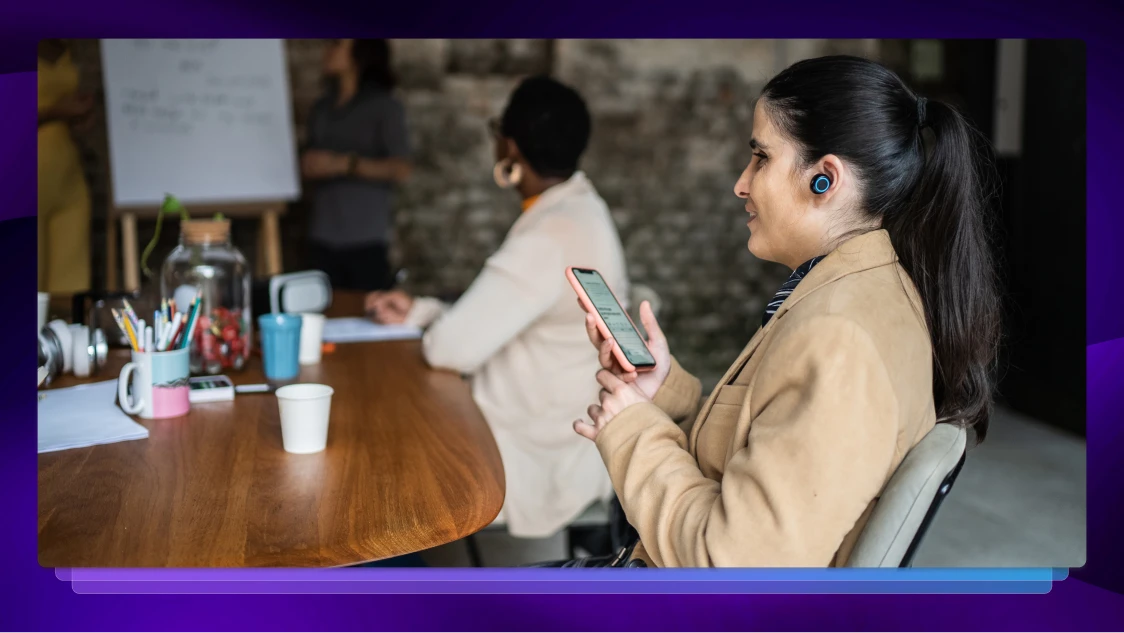FCC Closed Captioning Rules: Requirements in for Internet and TV Content
FCC closed captioning rules are essential to ensure equal access for TV and video programming. Here's how to meet online requirements on captions.

With the increase in mobile device and smartphone usage, more end-users or viewers are watching online video content. Additionally, access to broadcast TV is increasing as more content becomes available both online and offline. Viewers can select the content they want to watch or stream on their mobile devices and phones.
People can also choose from options like having fewer or no commercials and modify their closed caption or subtitle preferences if applicable. Hence, video programming distributors (VPDs) and broadcasting producers may face challenges when adhering to FCC closed captioning compliance.
As the Federal Communications Commission (FCC) requires strict guideline adherence to support the disabled, it’s important to review FCC requirements and updates for television and the internet which we’ll explore.
FCC Closed Captioning Requirements for TV
Closed captions are text boxes for the audio in a television program. Useful for entertainment purposes as well as the news, closed captions provide access for deaf or hard of hearing individuals. Unlike open captions, end-users can control the settings for closed captions.
Congress establishes and updates all closed captioning rules for TV programming. This applies to VPDs like broadcasters, cable operators, satellite distribution companies, and other types of video programming distributors. Closed captioning rules require VPDs to use closed captioning in television programs. This makes all TV programs accessible for individuals who are deaf or hard of hearing.
In 2020, the FCC closed caption quality standard rules and requirements require that captions:
- Provide accuracy
- Display during the entirety of a program
- Synchronize with audio tracks
- Provide unobtrusive caption placement
1. Provide Accuracy
An important part of closed captioning standards is that closed captions should be accurate and match the exact wording in the dialogue. Noting noises, music and other sounds in the background is also part of the accuracy with captions. Additionally, caption frames should be at readable speeds, (3 to 7 seconds).
2. Display During the Entirety of a Program
Captions must be completely displayed from the beginning of a program until it ends. While this might vary based on the type of program, captions should display for the fullest extent of a program.
3. Synchronize with Audio Tracks
Spoken words should be synchronous and match the timing and speed based on what’s displayed on the screen for individuals who are deaf or hard of hearing.
4. Provide Unobtrusive Caption Placement
When placing captions on the screen, they shouldn’t block or obstruct the viewing area. They also should not overlap subtitles or other captions nor should they run off the screening area.
Additional information on the FCC closed caption rules is available on their website. It’s located in the section for closed captioning for television.
FCC Closed Captioning Requirements for Internet Content
The FCC has captioning requirement guidelines to keep news, entertainment and important information accessible for everyone. the 21st Century Communications and Video Accessibility Act (CVAA) or Live and Video Accessibility Act CVAA, passed in 2010. It established safeguards on video content for the disabled. For example, television content with closed captions must also include the captions when the content airs online. Likewise, content that doesn’t require captions won’t require it when played online.
To meet CVAA compliance, the FCC video programming caption requirements are in categories:
Video Clips
Any excerpt from a video with captions that airs on TV should include captions when it plays online. However, this doesn’t apply to apps or third-party sites that post video excerpts.
Captions requirements are for:
- Uncut video clips after 1/1/16
- Video montages dated after 1/1/17
- Live and near live TV shows dated after 7/1/17
Full-Length Videos
These are videos that first air on TV and are then shown online. You should include captions for:
- All videos (unedited, prerecorded) that aired after 9/30/12
- All live or near-live programming that aired after 3/30/13
- Edited programs shown on TV after 9/30/13
Archived Internet Videos
Archived internet videos first air online and then on TV and should include captions. Video distributors have 15-days to add captions to content before airing them on TV. If you’re unsure about the FCC closed captioning requirements, use this helpful FCC Checklist. [Include the FCC Checklist here]
Exclusions include:
Videos the Public Makes
Caption requirements are only if the video will air on TV. Despite this not being part of the guidelines, businesses might want to add captions. They can provide access to large audiences and adhere to ADA video guidelines.
Movies Made Online
Online movies don’t require captions unless they air on TV. However, including captions can widens audiences. Netflix, for example, went from offering 3 languages to more than 20. When there’s a wide range of viewers, providing accessibility can increase brand equity.
Meeting Captioning Guidelines by Using Rev
With our full-service transcription service and captioning service, Rev can help you meet your captioning guidelines. You can leave the FCC updates and changes to our team of experts who adhere to all the FCC closed caption rules. However, a first step in ordering captions is determining the types and frequency of orders you have:
Order Video Content Captions (Standard Orders)
Let’s say you only have a few projects that need captions. You’ll find captioning content with us is easy. Maybe you want to upload a file, paste a URL or pull a video from a site like YouTube or Vimeo:
How to Order Captions:
- Simply upload your files or paste your URLs onto our site for a fast 24-hour turnaround. Note: To caption videos from your account, we accept Hulu, Adobe, Vimeo, YouTube and videos from several other platforms. And, we can send you file formats in .srt, .txt, .mcc, and several other file types.
- We have a dedicated team of 50,000+ professionals who work 24/7/365 and we guarantee 99% accuracy.
- After completing your captions, we’ll email your files to you. You can then make edits with our helpful tools and publish your content.
Rev now offers burned-in captions (open captions). Just check the “burned-in captions” box at checkout and you’ll receive a video with permanent, hard-coded captions added straight to your videos. Also available for foreign language subtitles!
Order Video Content Captions (Bulk Orders)
Now, let’s say you have bulk orders instead. Or, maybe you’re you concerned about captioning costs. You can always place bulk orders through Rev API or Rev AI and the steps are simple.
Rev API
The Rev API is an accessible tool that’s mostly used by businesses. It can help you caption large video orders and it’s backed by our 100% guarantee. We provide 99%+ accuracy on all orders and we use human help.
To get started with Rev API:
- Use the link above and provide us with your name and email address.
- Let us know if you would like our transcription service or caption/subtitle service. We’ll email your sandbox credentials to you and no account is required (cool, right?).
- You can start placing orders right away and our team of human experts will provide your captions.
- For turnarounds, you can have transcripts back in 6 hours or less and captions back in under 24 hours.
Rev AI
If budget is a concern, Rev AI might be the option for you. It’s a cheaper way to access transcription services and it uses an automated speech-to-text engine API. It’s mostly for businesses that want an automated service (robots, humans). While this is sometimes a slightly less accurate approach to captioning, it’s much cheaper than human help. Selling points include it supports live captioning and you’ll have access to use the world’s best speech-to-text engine.
To get started with Rev AI:
Pay As You Go Plan
When you only need a video or two at a time, you might want to try out Rev AI with a free 5-hour credit. Then, if you’re satisfied with the service, start a Pay As You Go Plan. There are no usage limits and you’ll receive support via phone, chat and email.
Enterprise Plan
If you create and publish a lot of videos at once, enterprise captioning might be a better option. This is best if your concerns are accuracy, price and fast turnaround times. And, as a reminder, you won’t have to worry about updates and new closed captioning changes with the FCC – we’ll monitor that.
With this option, your pricing structures around the volume of work you have. Advantages include dedicated account reps and priority customer support. To inquire about an Enterprise Plan, contact one of our experts at (888) 491-8470. We will help you find the best solution for your business needs.
Download the Video Distribution Guide to Captions and Subtitles now















